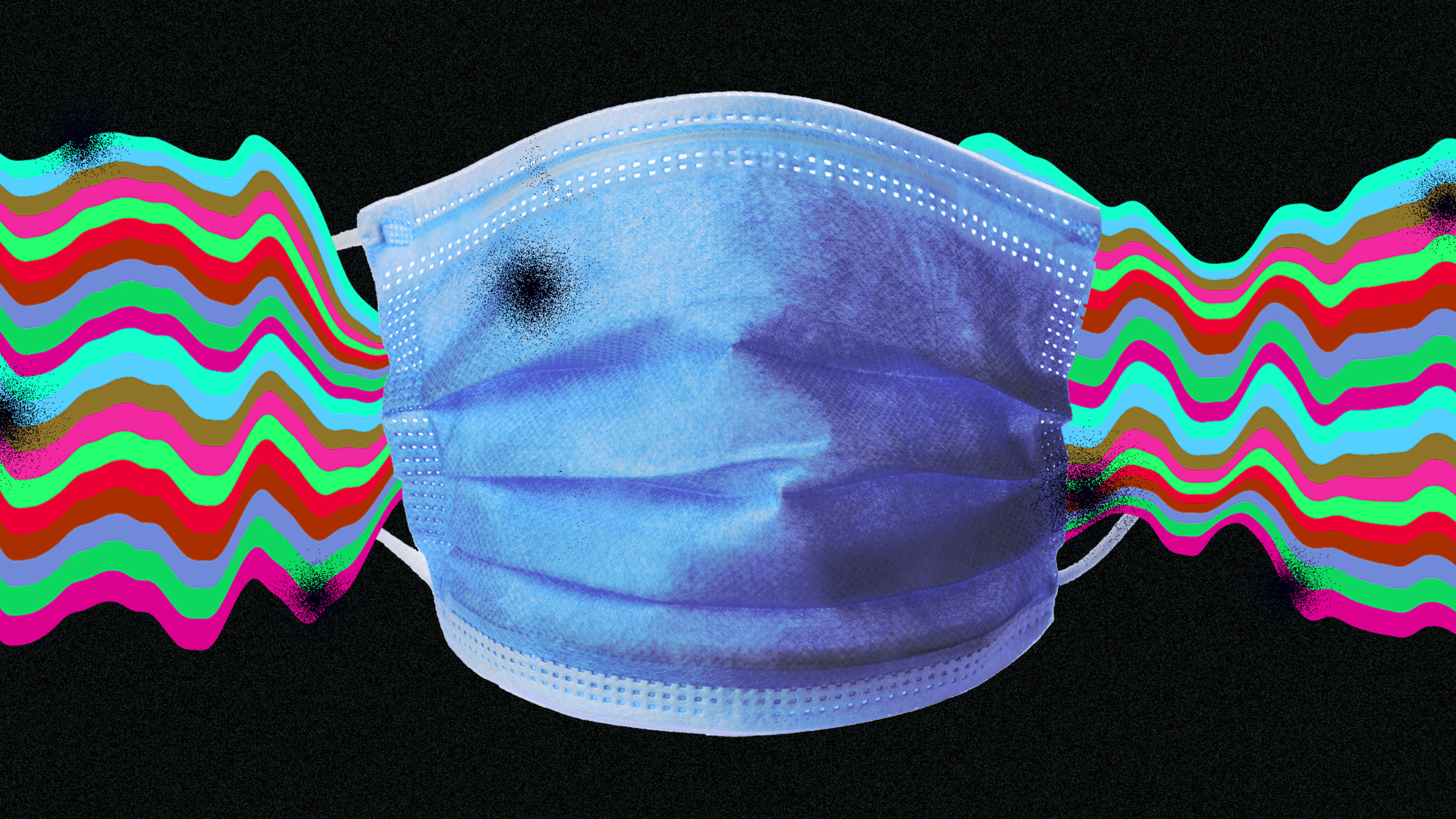It has been 18 months since the United States first headed into lockdown in reaction to the spread of COVID-19. The virus has mutated and continues to afflict Americans. But with people masking less and forgoing social distancing, experts worry that Americans are about to be hit with a new confluence of winter ailments on top of COVID-19 itself.
The Center for Disease Control and Prevention shows that respiratory syncytial virus [SV], a common respiratory infection, is on the rise already this season. While positive tests for the flu remain low, CDC data shows that reports of flu-like symptoms are also ticking upward. During the height of the pandemic, before there was a vaccine, masking and social distancing kept these other illnesses in check. But with adults masking and socially distancing less and kids still unvaccinated and returning to school, there is a big opportunity for people to get sick from COVID-19 and everything else simultaneously. The phenomenon is being called a twin-demic or alternatively a “multi-demic.”
This week Moderna shared that it is developing a combination flu and COVID-19 booster shot. It is also has pre-clinical data from testing with mice on a vaccine that would provide protection against flu, RSV, and COVID-19. Neither of these vaccines, however, will be ready for the impending flu season.
Today, we shared positive pre-clinical data demonstrating our ability to combine 6 mRNAs against 3 different respiratory viruses in 1 vaccine: COVID-19 booster + Flu booster + RSV booster. #mRNA pic.twitter.com/6AEkhSJrO5
— Moderna (@moderna_tx) September 9, 2021
“Getting through the winter could be complicated by influenza and respiratory syncytial virus,” Director of the National Institute for Allergy and Infectious Disease Anthony Fauci said on CNN last week.
Typical flu and cold season peaks from December until March. With pandemic restrictions in place last year, cases of both RSV and flu reached historically low levels in late 2020 and early 2021. As a result there was not much opportunity for people to contract both COVID-19 and another illness like RSV or flu. Leopoldo N. Segal, associate professor and researcher at New York University Grossman School of Medicine, recently published a study in Nature looking at whether co-infection was a main driver of death in COVID-19 cases. While it was not, he says, that was largely because doctors were treating hospitalized patients aggressively to pre-empt secondary infection from pneumonia, and because few patients were getting co-infected with other viruses such as flu.
“We did look for influenza quite carefully,” he says. “Granted, this was the first wave. It seems like virus approaches that we use now with masks and social distancing, those are very effective at reducing the transmissibility of common respiratory viruses, so we’re not seeing that co-infection is a major driver.” he says. “Things might be different if we were to lose those measures.”
As we head into the fall of 2021, the risk of catching COVID-19 is once again up across the country. Only 52% of Americans are fully vaccinated. There is now a major federal push to get more people vaccinated. This week President Joe Biden expanded vaccination mandates to include federal workers in the executive branch and contractors. Additionally, all companies with more than 100 workers will be required to have their employees vaccinated or tested weekly for COVID-19.
Until more people are vaccinated against COVID-19, the CDC is making a number of recommendations for the fall to curb the impact of COVID-19 and possible concurrent illnesses. First, the CDC says, everyone (except infants 6 months and younger) should get their annual flu shot. In areas where COVID-19 transmission is high, Americans should continue to wear masks indoors, including vaccinated people and school children, and stay socially distant from people outside their household. The CDC also suggests taking stock of your health regularly by taking your temperature.
Parents: Get your family vaccinated before #flu season starts. September and October are good times to get vaccinated against flu. Some kids might need two doses of #fluvaccine. Learn more: https://t.co/auXobWufHG pic.twitter.com/9bEMnlShjZ
— CDC Flu (@CDCFlu) September 8, 2021
While 71% of Americans say they’ll get a flu shot this year, according to a CVS survey, the desire to mask is waning. An August poll from Monmouth University, found that a slim majority of Americans (52%) “at least somewhat support” bringing back masks and social distancing protocols. Roughly 46% are opposed. Public health experts insist these measures, in addition to vaccinating the vast majority of Americans, are required in order to restrain the virus and return to what was once considered normal daily life.
“If we can get through this winter and get really the majority—overwhelming majority—of the 90 million people who have not been vaccinated, vaccinated,” Fauci said on CNN. “I hope we can get some good control in the spring of 2022.”
Recognize your brand’s excellence by applying to this year’s Brands That Matter Awards before the early-rate deadline, May 3.
